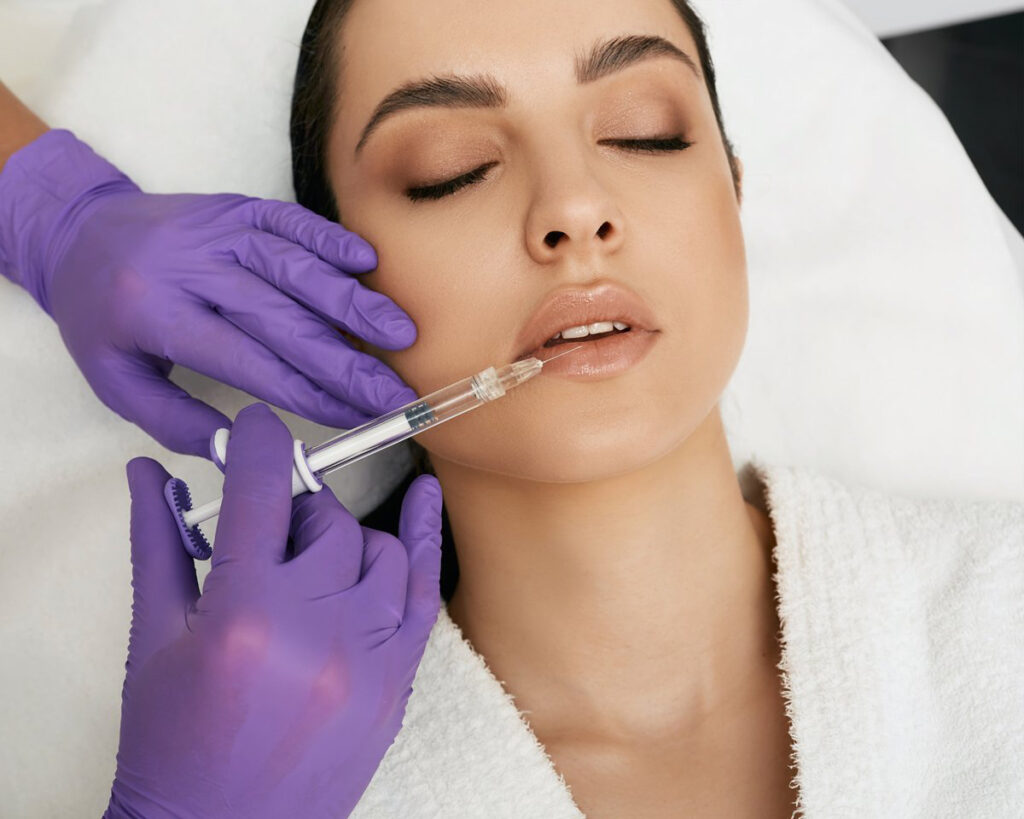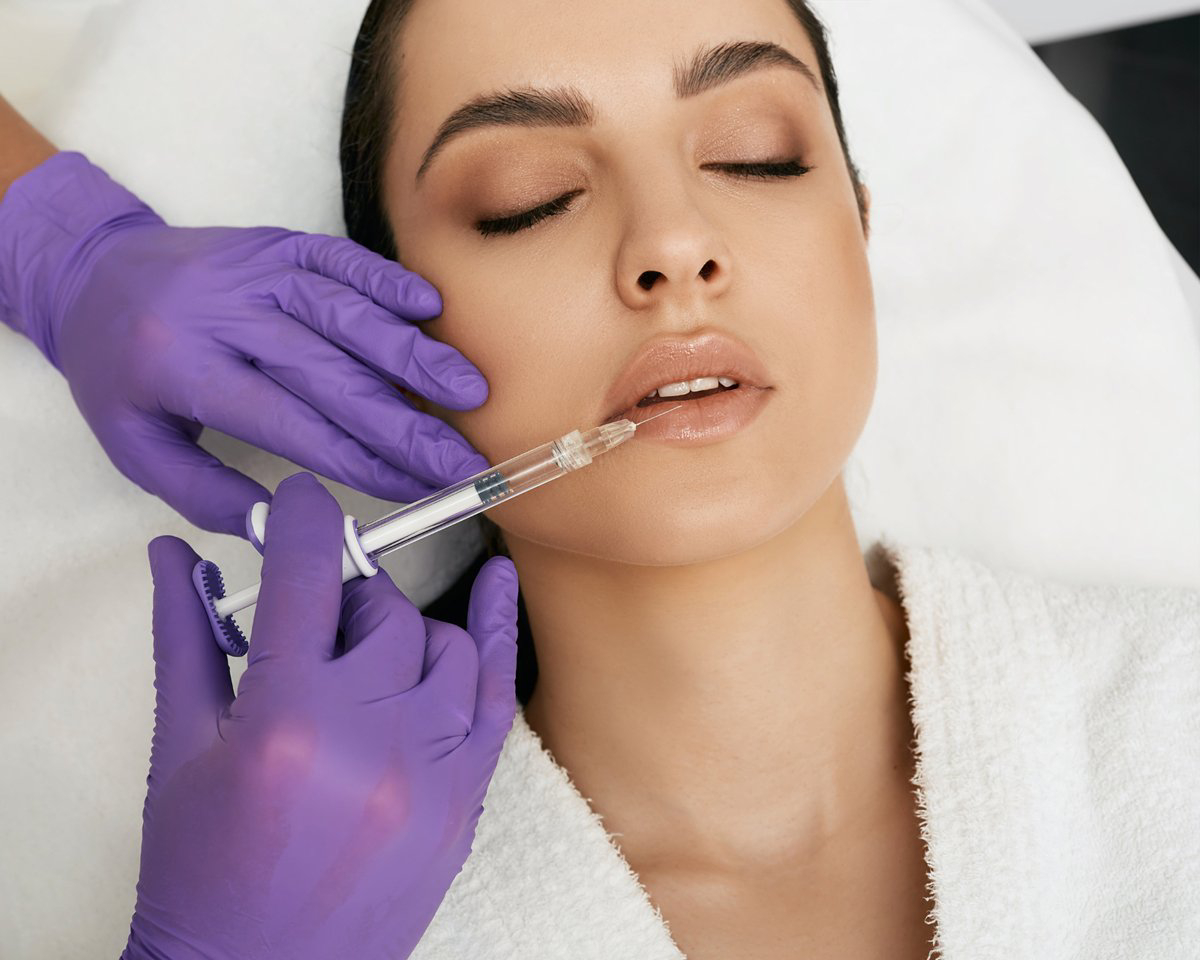Lip fillers have surged in popularity as a non-surgical cosmetic procedure. Celebrities and social media influencers alike have helped fuel this demand. However, achieving fuller, natural-looking lips involves more than just booking an appointment.
This guide breaks down the science, process, risks, and recovery phases of lip fillers. Whether you’re a first-timer or considering a touch-up, this article offers essential insights to help you make an informed decision.

Understanding Lip Fillers and Their Composition
Lip fillers, a subset of dermal fillers, involve injecting substances to add volume, shape, or structure to the lips. Most lip fillers today use hyaluronic acid (HA), a naturally occurring molecule found in the skin.
The Role of Hyaluronic Acid in Lip Fillers
Hyaluronic acid is highly valued for its exceptional moisture-retaining ability. As a result, it effectively plumps the lips while simultaneously maintaining a soft, natural feel. Moreover, its hydrating properties make it a popular choice in lip enhancement treatments, promoting smoothness and subtle volume.
Scientific Benefits of Hyaluronic Acid in Lip Augmentation
- Hydration: HA attracts and binds water, keeping the lips supple.
- Biocompatibility: As a naturally occurring substance, the risk of allergic reaction is minimal.
- Reversibility: If unsatisfied, an enzyme called hyaluronidase can dissolve the filler.
- Collagen Stimulation: Over time, HA can promote collagen production, offering long-term skin benefits.
Preparing for the Lip Filler Procedure
Proper preparation is essential for a smooth experience and achieving the best results. First, schedule a consultation with a licensed injector to discuss your goals and concerns. Additionally, understanding the procedure and following pre-treatment guidelines will help ensure safety and enhance overall satisfaction.
What Happens During Your Consultation?
A qualified professional will evaluate your facial structure, discuss your goals, and explain the product options. It’s important to disclose medical history, allergies, and current medications.
Key Topics to Discuss with Your Practitioner
- Desired lip shape and volume
- Filler type and brand recommendations
- Potential side effects and risks
- Pricing and maintenance plans
Pre-Treatment Tips to Optimize Results
Your practitioner will provide guidelines to reduce bruising and swelling. Here are a few commonly recommended tips:
- Avoid blood thinners like aspirin and ibuprofen for a week prior.
- Limit alcohol consumption 24-48 hours before the appointment.
- Use Arnica supplements (if approved) to reduce potential bruising.
The Lip Filler Procedure: Step by Step
Understanding each phase of the procedure is essential; as a result, it helps manage expectations effectively. Typically, the entire process is quick and straightforward, often taking less than an hour. Therefore, knowing the timeline ensures a smoother experience and reduces anxiety about the procedure.
Anesthesia and Numbing Options
To ensure comfort, your injector may apply a topical numbing cream or administer a dental block. Most hyaluronic acid fillers also contain lidocaine to minimize pain.
The Injection Process
Once numb, the injector uses a fine needle or cannula to introduce the filler into strategic points. The technique varies based on the desired shape—whether it’s defining the Cupid’s bow, enhancing volume, or correcting asymmetry.
Injection Techniques and Considerations
- Linear threading for smooth volume distribution
- Serial puncture for precision in smaller areas
- Cross-hatching for fuller lip body
Constant assessment of symmetry and balance occurs during this stage. You may be asked to sit upright midway for adjustments.
Immediate Aftercare During the Procedure
After the injection, the lips are gently massaged to evenly distribute the filler and prevent lumps. Additionally, ice packs are applied to reduce swelling and discomfort. As a result, this post-care routine ensures smoother results and enhances comfort during the recovery process.
Aftercare and Lip Filler Recovery: What to Expect
Lip filler recovery usually follows a predictable timeline; however, individual experiences may vary. Therefore, understanding what is normal during the healing process is essential. Additionally, recognizing unusual symptoms early helps prevent potential complications and ensures a smoother, safer recovery for optimal results.
Common Side Effects and Their Management
Most side effects are mild and resolve within a week. Some common reactions include:
- Swelling and redness at the injection site
- Tenderness or mild pain
- Slight asymmetry during the healing phase
These side effects are usually manageable at home. However, contact your provider if symptoms worsen or persist.
Best Practices for Optimal Healing
Proper aftercare significantly affects the final outcome.
Essential Aftercare Tips for Smooth Recovery
- Apply cold compresses intermittently for the first 24 hours.
- Sleep elevated to reduce swelling.
- Avoid strenuous workouts for at least 24-48 hours.
- Refrain from excessive lip movement or touching the area.
Activities to Avoid Post-Treatment
- Hot beverages or spicy food
- Makeup on the lips for at least 24 hours
- Alcohol and smoking during initial recovery
When to Schedule a Follow-Up
A follow-up appointment is usually recommended after two weeks. Your injector will assess the results and determine if touch-ups are needed.
Long-Term Considerations and Maintenance
Lip fillers are temporary; therefore, understanding how to maintain your results is essential for long-lasting effects. Additionally, proper aftercare and regular touch-ups help preserve volume and shape. Consequently, planning future treatments wisely ensures you achieve your desired look while maximizing the benefits of lip fillers.
How Long Do Lip Fillers Last?
Typically, most hyaluronic acid-based fillers last between six months to a year. However, the exact duration varies depending on individual metabolism, the specific filler used, and lifestyle factors. Therefore, maintaining a healthy lifestyle can help extend the results and maximize the filler’s longevity.
Factors That Influence Filler Longevity
- Frequent exercise can accelerate metabolism.
- Smoking and sun exposure break down fillers faster.
- Proper skincare can help extend results.
Options for Reversing Lip Fillers
If dissatisfied with the results, reversal is possible using hyaluronidase. Specifically, this enzyme effectively dissolves hyaluronic acid (HA) fillers. Moreover, the process works quickly, typically within 24 to 48 hours after injection. Therefore, it offers a safe and efficient solution for correcting unwanted filler results.

The Science of Lip Filler Risks and Complications
Although lip fillers are generally safe, they still carry potential risks like any medical procedure. Therefore, it is essential to understand possible complications, such as swelling or infection. Consequently, staying informed and choosing a qualified professional helps minimize risks and ensures a safer experience.
Rare but Serious Risks of Lip Fillers
- Vascular occlusion: Blockage of a blood vessel
- Infection at the injection site
- Nodules or granulomas
How to Minimize These Risks
- Choose a licensed and experienced injector.
- Ensure the facility follows sterile techniques.
- Monitor for signs of infection or unusual pain.
Signs of Complications Requiring Immediate Attention
- Severe or prolonged pain
- White or darkened patches indicating compromised blood flow
- Fever or chills suggesting infection
Cost, Pricing, and Choosing the Right Provider
Price varies based on location, injector expertise, and filler type. However, choosing a provider solely for lower costs may result in poor outcomes. Therefore, it is essential to prioritize experience and qualifications to ensure safety and achieve the best possible results.
Typical Lip Filler Pricing
Typically, lip fillers cost between $500 and $2,000 per session. Moreover, this price range includes the product, facility fees, and the injector’s expertise. Therefore, it’s essential to research qualified professionals, as experience and location significantly influence the overall cost of the procedure.
What Influences Lip Filler Costs?
- Geographic location
- Brand and type of filler used
- Experience and certification of the injector
Why You Should Prioritize Experience Over Cost
However, opting for inexpensive fillers or deals from unlicensed providers may result in poor results and serious health risks. Therefore, it is essential to choose certified injectors who use high-quality products and strictly follow safety protocols, ensuring better outcomes and minimizing potential complications.
Popular Myths and Misconceptions About Lip Fillers
Misunderstandings often deter people from considering lip augmentation. Let’s debunk a few.
Myth: All Lip Fillers Look Fake
When done correctly, fillers can create subtle and natural results. Moreover, the goal is to enhance your features rather than drastically change your appearance. Therefore, choosing an experienced injector is essential to achieve a balanced, refreshed look while maintaining your natural beauty and facial harmony.
Myth: Lip Filler Procedures Are Painful
With proper numbing and precise technique, most patients experience only mild discomfort during the procedure. Additionally, modern fillers contain lidocaine, which further enhances comfort. Therefore, combining expert application with advanced formulations ensures a more pleasant experience and minimizes pain throughout the treatment.
Myth: Lip Fillers Permanently Stretch the Lips
Over time, fillers naturally break down and are gradually absorbed by the body. Consequently, the lips return to their original shape without permanent stretching. Additionally, when treatments are spaced appropriately, this ensures natural-looking results while maintaining lip health and preventing any long-term damage.
Advancements and Trends in Lip Filler Techniques
Lip augmentation is continuously evolving. With advancements in products and techniques, the procedure has become safer and more effective. Moreover, modern methods offer longer-lasting and natural-looking results. As a result, individuals can achieve enhanced lip volume and shape while minimizing risks. Therefore, lip augmentation is increasingly popular.
Emerging Techniques in Lip Filler Application
- Microdroplet injections: Precise control over lip contouring
- Cannula techniques: Minimizes bruising and vascular risks
- Layering different HA fillers: Achieves complex results with better support
Notable Trends in Lip Filler Aesthetics
- Preference for natural, balanced volume over overfilled looks
- Enhancing the lip border without excessive plumping
- Combination treatments involving botulinum toxin for a “lip flip”
Future of Lip Fillers in Aesthetic Medicine
Ongoing research focuses on developing fillers with enhanced viscosity, extended longevity, and additional skin health benefits. Moreover, advancements in AI-assisted facial analysis are expected to revolutionize personalized treatment plans. Consequently, these innovations aim to deliver more effective, natural-looking results while improving patient satisfaction and overall skin rejuvenation outcomes.
Lips are the most expressive feature on a woman’s face!
CHRISTIAN LOUBOUTIN
Conclusion: Is Lip Filler Right for You?
Lip fillers remain a powerful tool in non-surgical facial enhancement. The key to achieving safe and satisfying results lies in education, realistic expectations, and choosing a qualified injector.
Take your time during the consultation process. Don’t hesitate to ask questions or express concerns. With the right preparation and care, lip augmentation can enhance your appearance while maintaining a natural look.

